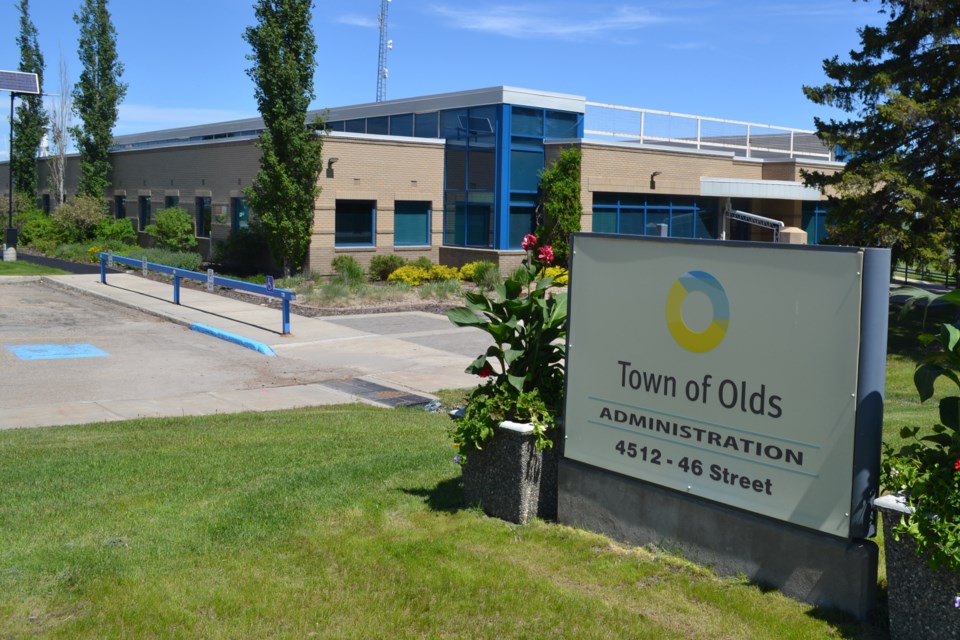OLDS — A tax rate bylaw calling for a five per cent increase in Olds municipal taxes passed first reading during town council’s April 14 meeting.
The bylaw needs to pass three readings to be implemented. The next council meeting is April 28.
Back in December, the town's council passed a tentative budget with that same five per cent tax hike, saying the increase was designed to maintain core services.
The tax hike equates to a monthly increase of $9.33 for the average residential single-family home. The average non-residential municipal property tax bill would increase by $411.
The Town of Olds is also required by law to collect education taxes and a seniors’ housing requisition and pass them on to the provincial government.
Council was told that this year, the education tax has been hiked by 12.2 per cent and the seniors’ housing requisition has risen by five per cent.
Sheena Linderman, the town's director of corporate services, said when the education tax and seniors’ housing requisition are added in, the average residential property would see an increase of $268 a year, or $22.33 a month. And the average non -residential property would increase by $239 or $19.92 a month.
As she introduced the figures, Linderman said those provincial taxes “tend to get lumped in when residents are looking at their overall tax increase.”
Council also approved spring budget adjustments.
As a result of those adjustments, the Town of Olds' 2025 operating budget increased by $503,771 to $36,391,043, and the capital budget increased by $732,065 to $6,256,065.
Those adjustments include requisitions and program shifts directed by the provincial government.
Council was presented with three options for the budget.
Option 1, which they eventually chose, included the five per cent increase to municipal taxes and funding the remaining revenue required, $166,946, from the town’s tax stabilization reserve.
This option decreases the residential tax rate by 2.07 per cent and increases the non-residential tax rate by about eight per cent.
The other two options featured tax increases as low as 2.16 per cent for both residential and non-residential properties to as high as a 6.5 per cent increase to the municipal portion.
That would have resulted in an increase to the municipal portion of $146 or $12.17 a month and the average non-residential property would have increased by $531.
Neither of those other two options included drawing money from the Town’s fiscal stabilization reserve.
In option 3, when school and seniors requisitions are factored in, the average residential property bill would increase $302 or $25.17 a month, and the average non-residential property bill would rise by $359 or $29.92 a month.
Coun. Heather Ryan liked the idea of not drawing down the tax stabilization reserve further, saying it hasn’t been replenished much.
Coun. James Cummings echoed that point. And he liked another idea of Ryan’s: possibly moving tax stabilization money to another reserve if needed.
“Every year we've been on council, we've been asked to make amendments to the budget, because unforeseen circumstances happen all the time, and that's what reserves are for,” Cummings said.
“The ability to move a reserve from one place to another place is great for that purpose.“
Linderman and chief administrative officer Brent Williams said that could be done.
Coun. Darren Wilson said he could only support option 1.
He said the Town is facing many pressures, not only from the education tax and seniors’ housing requisitions but also water loss expenses and Olds Fibre Ltd (which operated as O-NET) debt payments that must be made.
“To me, that's exactly what the tax rate stabilization is for,” he said.
“Option 1 spreads some pain over both the res and the non-res. Unfortunately, yes, it draws down the tax reserve. (It) would still leave roughly, I think, about half in the tax stabilization fund.
“I look at it today and it’s a tough message that we post to our ratepayers that the next three years, four years, five years are going to be very difficult and challenging with tax rate increases, and they may be in that $300 plus range as option 3 has.
“The focus becomes debt and debt reduction. That's where my mindset is.”
Coun. Harvey Walsh also spoke in favour of option 1.
“The reserve is there for a purpose. We've created (it) from a governance perspective, to help our community out,” he said.
Coun. Dan Daley agreed with the points made by Wilson and Walsh.
“I believe that the impact coming from our school tax as well as our seniors, and impacting households, and knowing what financial strain is on the households within our community nowadays, I believe the lesser impact that we can instill on our citizens, the better off our community will be,” Daley said.
“I agree that our reserves are there for a reason. They're there for times to help out the town in situations like this, where we can lessen the impact on to our citizens.”
He also agreed with Wilson, that council may have to make some very tough financial decisions in the next several years.
“In the next 2,3,4,5, years from now, there may be a different story going forward, and this gives our citizens time to adjust, react, be ready for that, plan ahead,” he said.
In the end, council voted unanimously to give first reading to the tax rate, bylaw. Council also unanimously approved the operating and capital budget adjustments.



